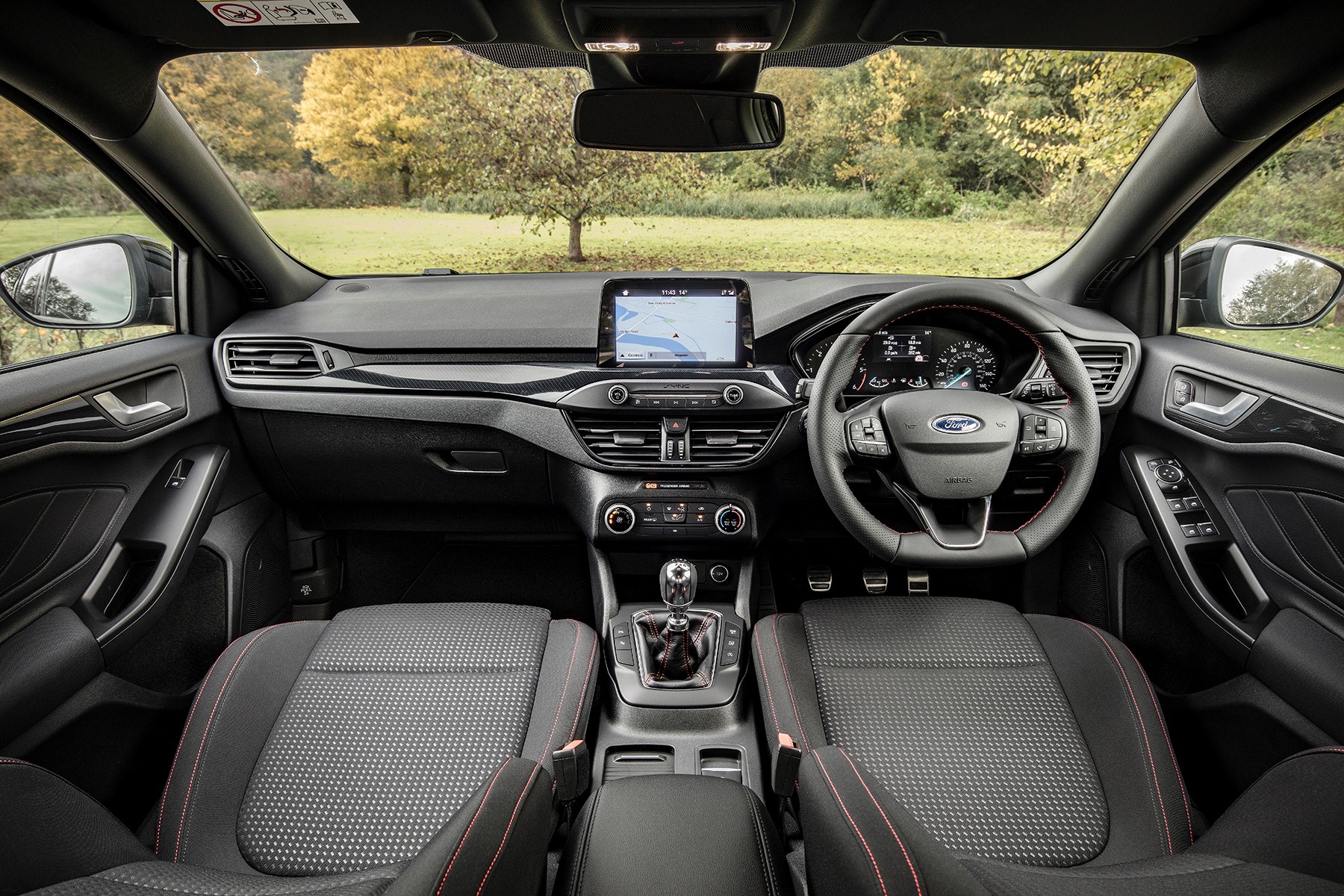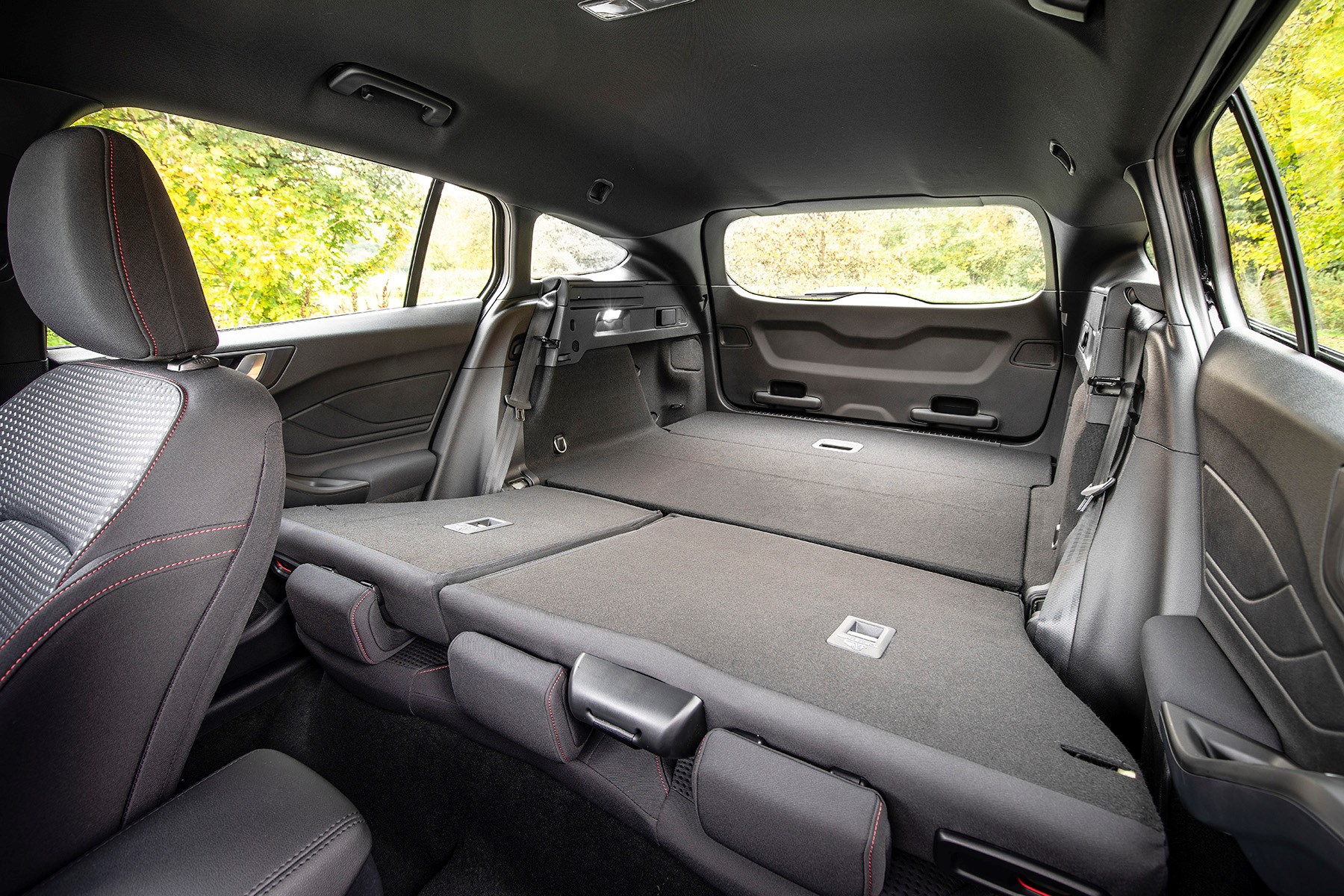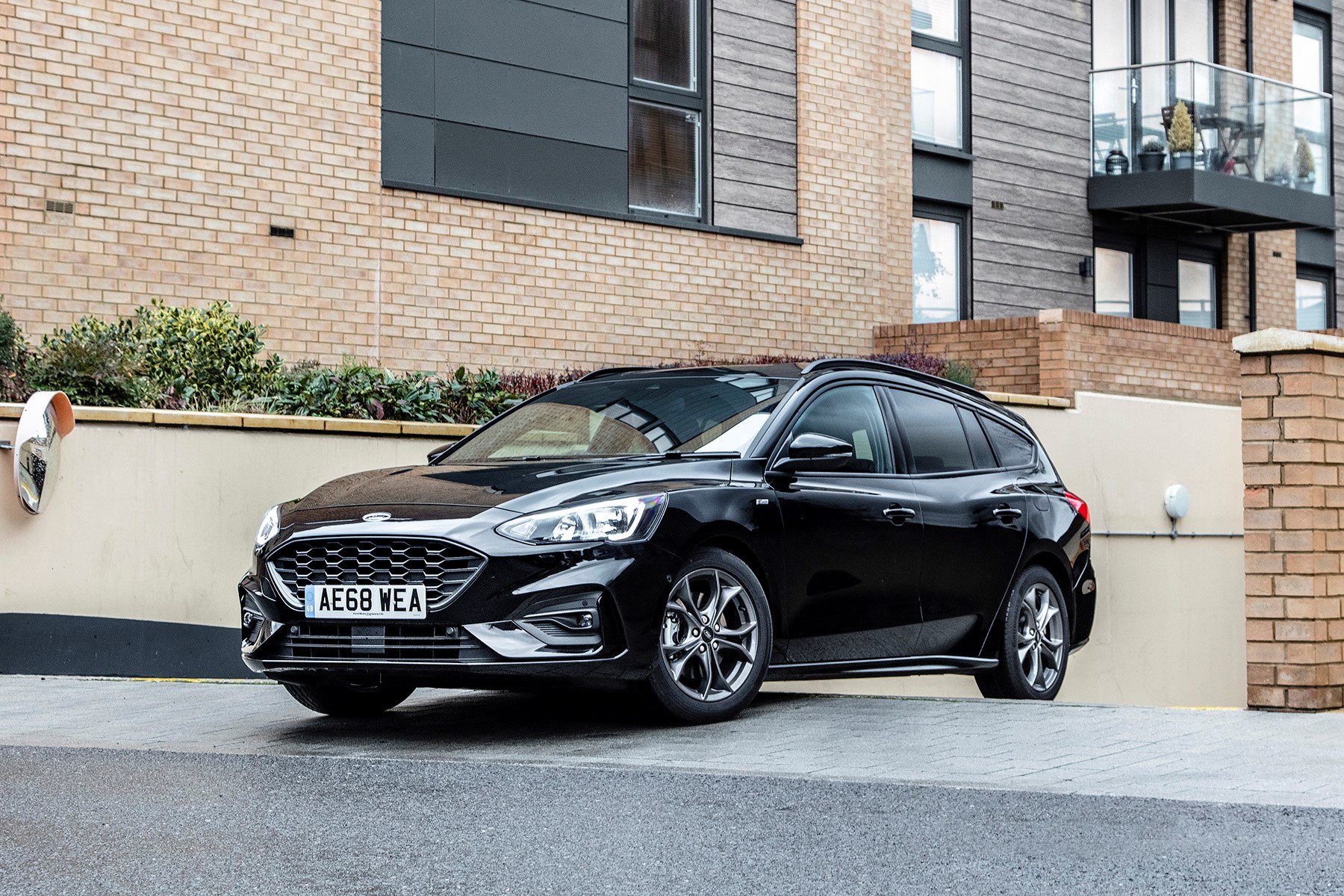► We drive Focus Estate ST Line
► Bigger boot, independent suspension
► Simple practicality with decent drive
Take the Ford Focus hatch and simply add a larger boot. Sounds like a simple formula for the Estate, doesn’t it?
In a world where the current crop of SUVs and people carriers can feel a little overcomplicated, it’s quite refreshing to find the Focus wagon a bit more simple and straightforward; you know, like a conventional car – remember those?

On lower trims the Focus Estate can look like the hatchback’s unfortunate nerdy cousin, trading image kudos for load-carrying practicality, but spec up to remove some of that grey/black plastic, and this Focus wagon can look handsome, too. Whatever the model you go for though, the Focus Estate simply does what you need well – without making a huge fuss about it. Why compromise decent road behaviour and everyday usability all for an SUV?
So what’s new then?
This fourth-generation Focus wagon is longer and taller than its predecessor at 4,668mm long and 1,494mm high, but a little less wide at 1,979mm. It wears the same face as the hatch, so you’ll know it’s the latest model up front, but strangely, the rear bears more of a shrunken-down resemblance to the 2007 Mondeo Estate. Yeah, that design classic.

Inside, it’s the same story as before: the cabin is an improvement over its predecessor, but ultimately lags behind the class-leading Volkswagen Golf in terms of quality. Additional little details, such as lined door storage bins will flatter Golf owners, but we think the general cabin will start creaking over time much sooner than the VW’s will.
You still get the benefit of additional headroom though, thanks to the stretched roofline and the optional comfort seats – on Style, Zetec and Titanium models – means you can upgrade your pews without having to fork out for a flagship model.

The 608-litre boot is a decent shape, being nice and square, and if you fold the rear seats down remotely from the boot, the 1,653-litre capacity will easily turn this wagon into a useful removal van.
What’s it like to drive?
In some respects, it’s better than the hatch. While independent rear suspension is limited to the higher-output versions on the five-door, all Estate models will have them fitted as standard. Yes, the ability to tackle your favourite country lane is a little less important when you often carry a boot-full of paraphernalia – but it certainly makes those journeys less arduous.
The steering is sharp, the pedals are well-weighted and you have a short, stubby gearlever. The rear of the car feels far less jittery than the hatchbacks we’ve driven fitted with a twist-beam axle, and the added level of stability when cruising up and down motorways makes it far more relaxing on longer journeys. Even this firmer-riding ST Line models feel a little less choppy.

You could go one further and option adaptive dampers on the more powerful higher-spec models too, which come with two additional comfort-biased drive modes. We’ve yet to try a new Focus Estate with these fitted, but suspect it’ll ride with a level of compliance a ‘sporty’ SUV could only dream of.
And performance?
We’ve tried the 1.5-litre TDCi EcoBlue diesel so far and it feels punchy enough for most. There’s 118bhp and 220 lb ft of torque available, with 0-62mph taking 10.3 seconds and a top speed of 120mph. Despite this ST Line’s 74.3mpg figure and 101g/km of CO2 output, everyday performance isn’t sluggish.

Cold starts are a little noisy, but the diesel clatter settles down into the background very quickly. We’d recommend sticking with the six-speed manual if you can, as the smooth-shifting eight-speed automatic does sap some of the power available and is noticeably more reluctant to rev.
New Ford Focus estate: verdict
Is it a case of ‘same story, different generation’? Perhaps, but you can rely on the Focus Estate for being what it is.
The Vignale and ST Line models help address the lack of styling some might find – at a cost – but otherwise, this new Focus estate will put straightforward practicality ahead of everything else. Want a spacious, mid-sized family car that’s sharp to drive? Add this to the shortlist. You’d have to really want rugged looks and a higher seating position to overlook this humble estate for an SUV.
Hopefully, there’s the full ST model on the horizon for those wanting something resembling a performance wagon, too. If you’re reading this Ford…